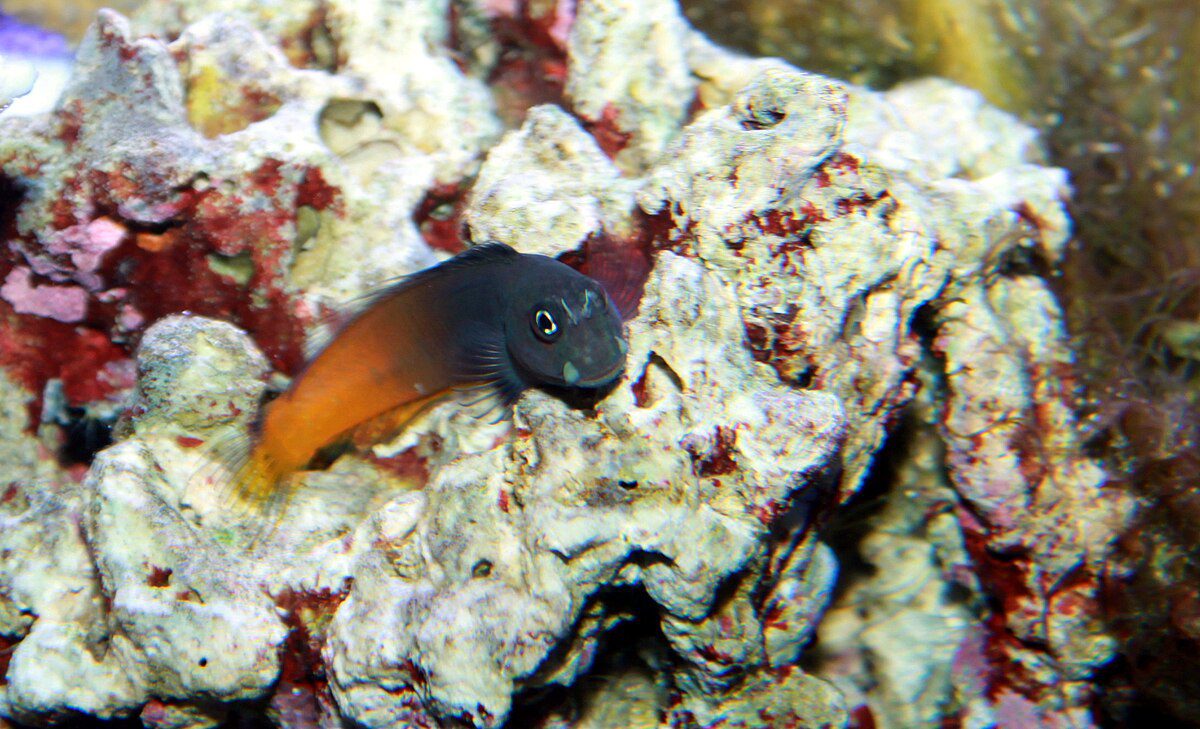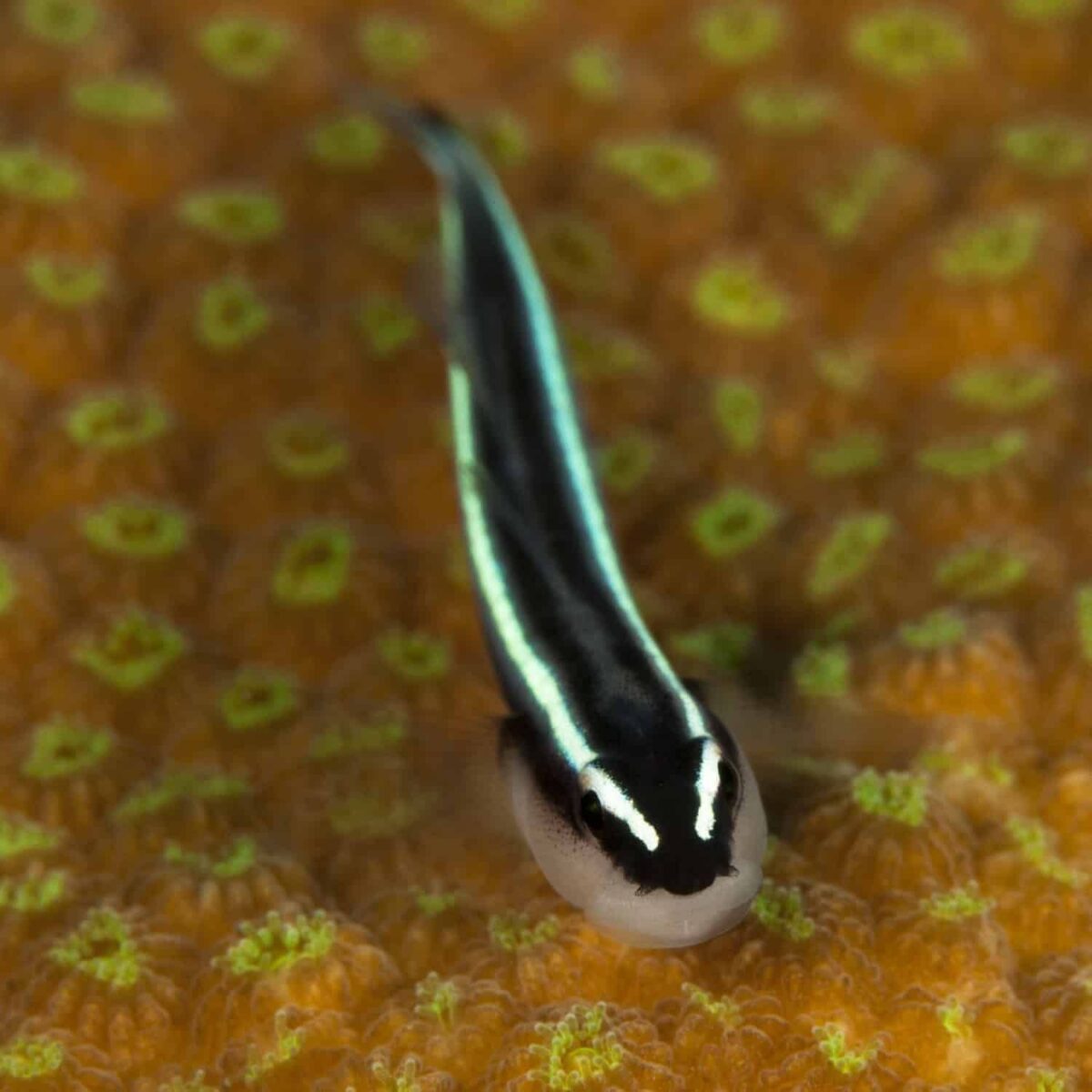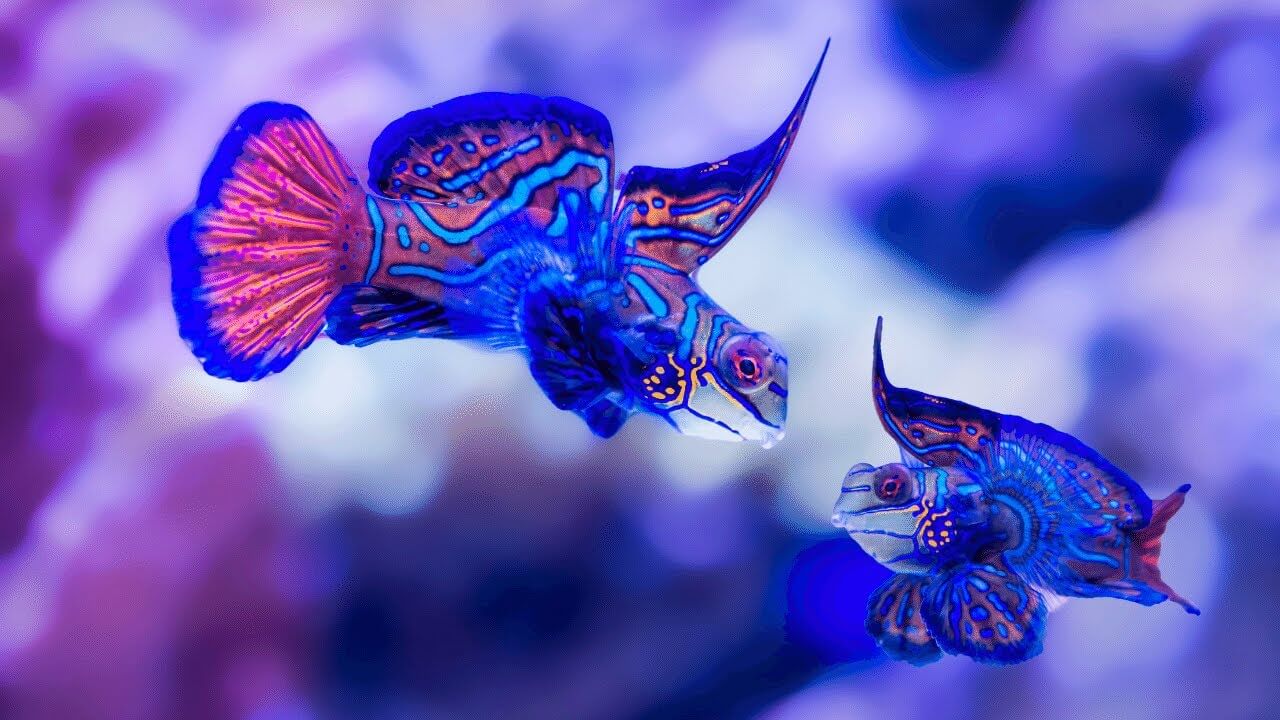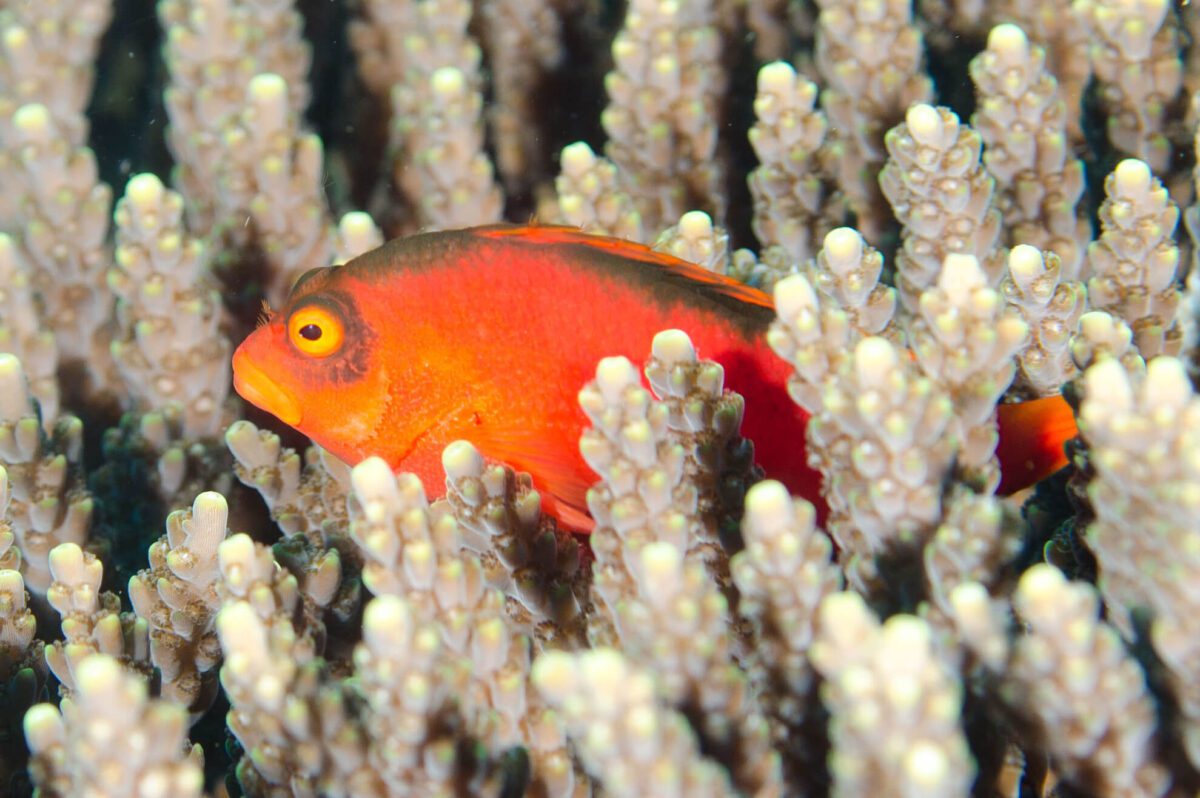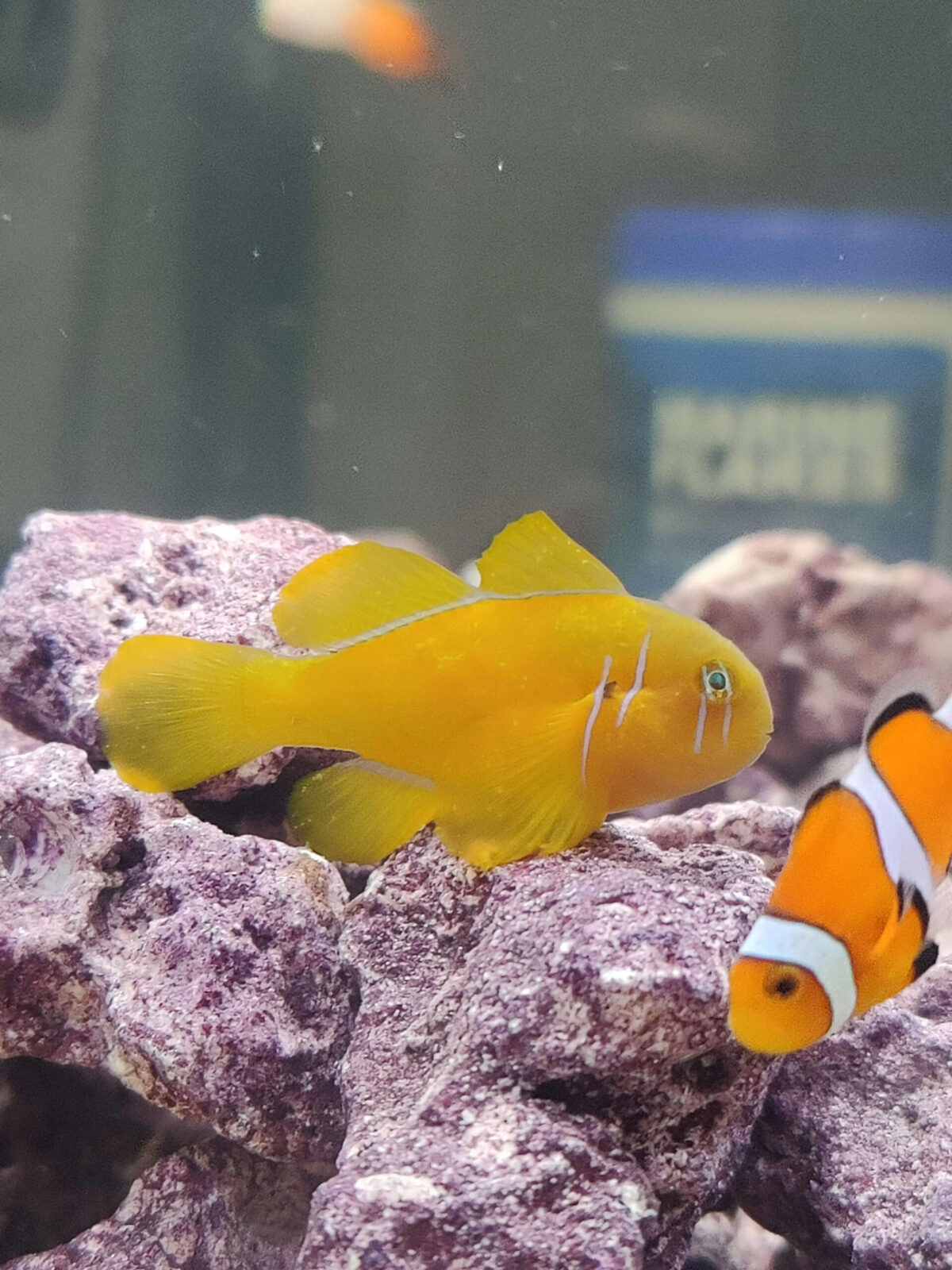G’day, mates! Today, we’re diving into the fascinating world of saltwater aquarium fish with a closer look at the Bicolor Blenny (Ecsenius bicolor). This widespread species is a true beauty, renowned for its striking colours and engaging personality. Whether you’re a seasoned marine aquarium enthusiast or just starting, the Bicolor Blenny is a fantastic addition to any reef tank setup.
So, join us as we explore everything you need to know about caring for the Bicolor Blenny, from its taxonomy and natural habitat to its physical characteristics and dietary needs. Let’s dive in!
Key Takeaways:
- The Bicolor Blenny is a visually appealing saltwater aquarium fish that adds beauty and personality to reef tank companions.
- Understanding the taxonomy and classification of the Ecsenius bicolour is crucial to providing the best care possible.
- Creating an ideal marine aquarium setup with suitable tank mates and appropriate water parameters is essential for the well-being of the Bicolor Blenny.
- Feeding the Bicolor Blenny a balanced and nutritious diet is vital to maintaining its health and vitality in captivity.
- Breeding the Bicolor Blenny can be challenging, requiring advanced knowledge and specialized equipment.
Introduction – Bicolor Blenny (Ecsenius bicolor)
This section will introduce the Bicolor Blenny (Ecsenius bicolor) and discuss its taxonomy, classification, natural habitat, and distribution. The Bicolor Blenny is an intriguing marine fish species inhabiting diverse Indo-Pacific region ecosystems. Let’s delve into the fascinating world of this species and explore its unique characteristics.
Taxonomy and Classification
The Bicolor Blenny is classified under the Animalia kingdom, Chordata phylum, Actinopterygii class, Blenniiformes order, Blenniidae family, and Ecsenius genus. Its scientific name is Ecsenius bicolor. This classification provides valuable insights into the evolutionary relationships and characteristics of the Bicolor Blenny within the broader context of marine fish taxonomy.
Natural Habitat and Distribution
The Bicolor Blenny is predominantly found in the Indo-Pacific region, encompassing a vast area from the Red Sea to the Hawaiian Islands. This species thrives in various habitats, including coral reefs, rocky areas, and lagoons. It prefers environments with abundant crevices and hiding spots, particularly among live rock. The Bicolor Blenny’s wide distribution highlights its adaptability and ability to thrive in diverse marine ecosystems.
Physical Description and Characteristics
In this section, we will explore the physical appearance and characteristics of the Bicolor Blenny. This colorful marine fish has a distinct bisecting color pattern, with the front half being blue to pale brown and the back half being orange or yellow. While the colours may vary slightly among individuals, the striking contrast between the two halves is a defining feature of this species.
Colours and Markings
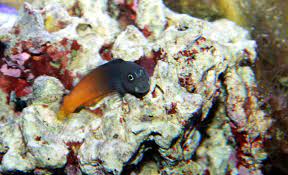
The Bicolor Blenny showcases vibrant hues that add colour to any saltwater aquarium. The front half of its body can range from shades of blue to pale brown, while the back half exhibits vivid orange or yellow pigmentation. These bold colours make the Bicolor Blenny a popular choice for marine aquarium enthusiasts looking to enhance the visual appeal of their tanks. Each individual may have slight variations in colouration, which adds to their uniqueness.
Gender Differences
Male and female Bicolor Blennies exhibit slight differences in size and colouration. Males are generally larger and may display vibrant blue colouration, especially during the breeding season. This added brilliance serves as an attractive display for the females. Conversely, females maintain the characteristic bisecting color pattern throughout their lives without undergoing significant color changes.
Varieties
Unlike other marine fish species, there are no known varieties or distinct morphs of the Bicolor Blenny. However, this species offers a beautiful combination of colours and markings that captivate the eye, making it a striking addition to any saltwater aquarium.
Grades
Grading is typically associated with specific attributes or patterns of a species, such as colour intensity or pattern consistency. However, there are no established grading systems for the Bicolor Blenny, as its natural colouration and markings are already visually appealing and sought after by aquarists.
Behaviour and Temperament
The Bicolor Blenny is renowned for its peaceful nature, making it suitable for reef tanks and community aquariums. This species, including peaceful reef fish, generally coexists with other compatible tank mates. However, it is essential to note that the Bicolor Blenny may exhibit territorial behaviour towards other blennies, gobies, or dartfish in smaller tanks. Providing ample hiding spots and hiding places within the tank can help alleviate conflicts and promote peaceful cohabitation.
Aquarium Requirements
Creating the ideal environment for the Bicolor Blenny is crucial for its well-being and overall health. You can ensure this captivating species thrives in captivity by providing suitable aquarium conditions. Let’s examine the essential requirements for keeping the Bicolor Blenny in your saltwater tank.
Ideal Tank Size and Layout
The Bicolor Blenny requires a spacious tank to accommodate its active nature and provide ample room for swimming and exploring. The minimum tank size recommended for this species is 30 gallons. Creating a well-aerated environment with suitable hiding spots and perches is essential. Scatter rocks throughout the tank to mimic the blenny’s natural habitat and create a visually appealing aquascape.
Water Parameters
Maintaining appropriate water parameters is crucial for the health and well-being of the Bicolor Blenny. The recommended pH range for this species is between 8.1 and 8.4. Salinity should be maintained between 1.023 and 1.025, and the temperature range should be kept between 72°F and 78°F. Water quality monitoring is essential, and water changes should be performed regularly to maintain optimal conditions.
Suitable Tank Mates and Potential Conflicts
When selecting tank mates for the Bicolor Blenny, it is essential to choose peaceful species that are not aggressive or territorial. Compatible tank mates include other reef-safe fish such as small gobies, dartfish, and peaceful wrasses. However, caution should be exercised in smaller setups, as the Bicolor Blenny may become territorial towards other blennies, gobies, or dartfish in confined spaces.
Compatibility with Live Plants and Invertebrates
The Bicolor Blenny is reef-safe and can coexist with live plants and saltwater invertebrates. However, caution should be taken when keeping fleshy corals in smaller tank setups, as the blenny may nip at them under certain circumstances. It is best to provide ample hiding spots and ensure the chosen tank mates can withstand the blenny’s occasional curious behaviour.
Adhering to these aquarium requirements can create a suitable and thriving environment for the Bicolor Blenny in your saltwater tank. Providing the ideal tank size, maintaining optimal water parameters, selecting compatible tank mates, and considering the needs of live plants and invertebrates will contribute to the blenny’s well-being and enhance the overall beauty of your aquarium.
Bicolor Blenny (Ecsenius bicolor) Care
Proper care is essential for the health and well-being of the Bicolor Blenny. We must perform regular maintenance to ensure our marine aquarium’s stable and clean environment. This includes regular water changes, keeping the filtration system in proper working order, and monitoring water parameters such as pH, salinity, and temperature.
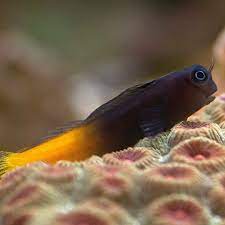
In addition to general maintenance, it is crucial to be aware of common fish diseases that can affect the Bicolor Blenny. Prompt identification and treatment of any health issues are essential to maintaining the overall health of the fish and preventing the spread of diseases in the aquarium. Some common fish diseases that blennies are susceptible to include ich (white spot disease), fin rot, and marine velvet.
When observing our Bicolor Blenny, looking for any signs of abnormal behaviour or physical changes is essential. These can include loss of appetite, lethargy, rapid breathing, visible lesions or wounds, and changes in colouration or appearance. If we notice any of these symptoms, we must take immediate action by isolating the affected fish, adjusting water conditions if necessary, and consulting with a veterinarian or experienced fishkeeper for appropriate treatment options.
Regular observation and proactive care are the keys to maintaining the health of our Bicolor Blenny and creating a thriving marine aquarium.
Diet and Feeding
Dietary Preferences
The Bicolor Blenny is an omnivorous species with specific dietary preferences. It feeds on a variety of foods, including both plant matter and small meaty foods. This diverse diet is essential for its overall health and well-being.
Recommended Foods and Feeding Schedule
To meet the dietary needs of the Bicolor Blenny, it is recommended to provide a combination of spirulina flakes, marine algae, and seaweed. These plant-based foods should be the primary component of its diet. Additionally, the blenny’s diet should be supplemented with other high-quality marine flakes, pellets, and small meaty foods like brine and mysis shrimp.
Feeding should occur 2-3 times a day, in small portions. This feeding schedule ensures that the fish receives an adequate amount of food without causing overfeeding, which can lead to poor water quality. Providing smaller, frequent meals helps to mimic the blenny’s natural feeding habits and promote optimal health.
Tips on Ensuring a Balanced and Nutritious Diet
To ensure a balanced and nutritious diet for the Bicolor Blenny, it is important to consider the following tips:
- Offer a variety of foods to provide a wide range of nutrients.
- Rotate the types of plant-based foods to prevent monotony in the diet.
- Avoid overfeeding to maintain good water quality and prevent obesity.
- Monitor the fish’s feeding behaviour to ensure it consumes the offered food.
- Consider using high-quality frozen or freeze-dried foods as occasional treats.
- Regularly observe the blenny’s overall health and adjust its diet accordingly.
By following these tips and providing a well-rounded diet, you can help promote the overall health and vitality of your Bicolor Blenny.
Breeding and Reproduction
Breeding the Bicolor Blenny in captivity can be a rewarding but challenging endeavour. Sexing this species is difficult, as males and females have no external differences.
Sexing
Determining the sex of Bicolor Blennies can be challenging due to their lack of external differences. Observing their behaviour and courtship rituals is often necessary to identify the males and females.
Breeding Behavior and Conditions
Regarding breeding behavior, male Bicolor Blennies display vibrant colorations to attract the females during courtship rituals. Specific conditions must be met to stimulate breeding, including maintaining optimal water parameters, providing a proper diet, and ensuring there are ample hiding spots for the fish to reproduce successfully.
Care of Eggs and Fry
Once the breeding process is complete, the care of eggs and fry becomes critical. Careful monitoring and maintaining optimal water conditions are essential to ensure the survival and well-being of the developing eggs and fry. This includes providing suitable shelter and appropriate nutrition for the growing fry.
Challenges in Breeding in Captivity
Breeding Bicolor Blennies in captivity can present various challenges. It requires advanced knowledge and specialized equipment to create the ideal conditions for successful reproduction. Water quality, tank size, and proper nutrition can significantly impact the breeding success rate.
Overall, breeding the Bicolor Blenny requires careful observation, understanding their behaviour, and providing optimal conditions for reproduction. While it can be challenging, successful breeding can contribute to the overall population of this captivating marine fish species.
Summary
The Bicolor Blenny (Ecsenius bicolor) is a visually appealing and fascinating species that can thrive in a saltwater aquarium with proper care and suitable tank conditions. This popular marine aquarium species is known for its distinct colouration, peaceful temperament, and compatibility with reef tanks.
By understanding the taxonomy, natural habitat, physical characteristics, care requirements, diet, breeding behaviour, and potential challenges of the Bicolor Blenny, aquarists can create an optimal environment that allows these fish to flourish and contribute to the beauty of their marine aquarium.
For successful blenny care, it is essential to maintain appropriate tank parameters, provide a balanced diet, and monitor the overall health of the fish. Creating a suitable and comfortable environment for the Bicolor Blenny will enhance the beauty and diversity of any saltwater aquarium, making it a delightful addition to any marine ecosystem.

